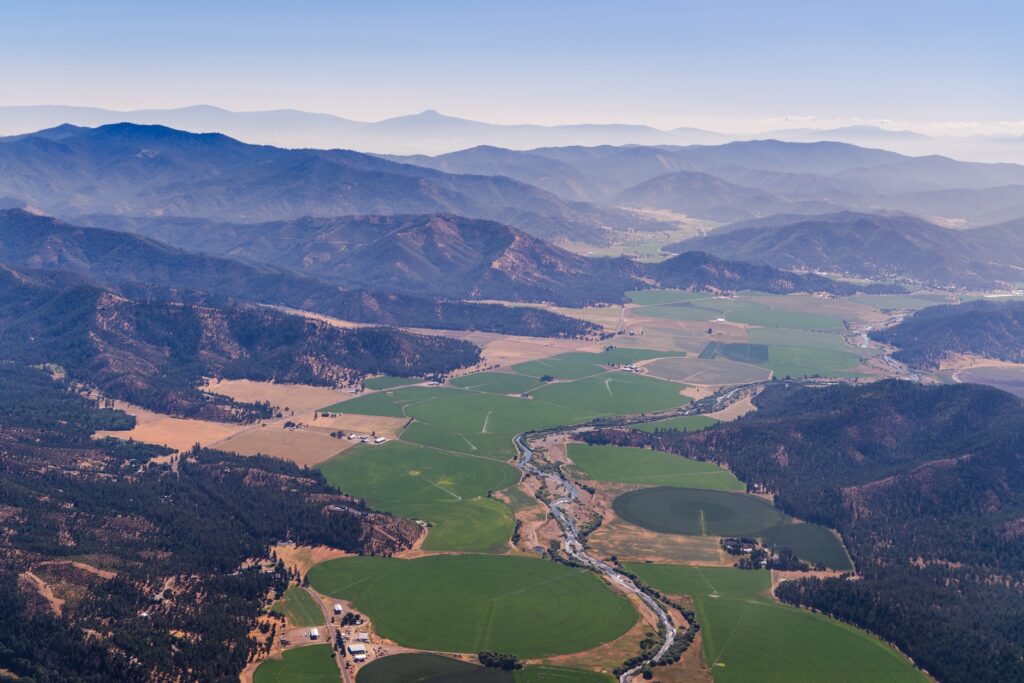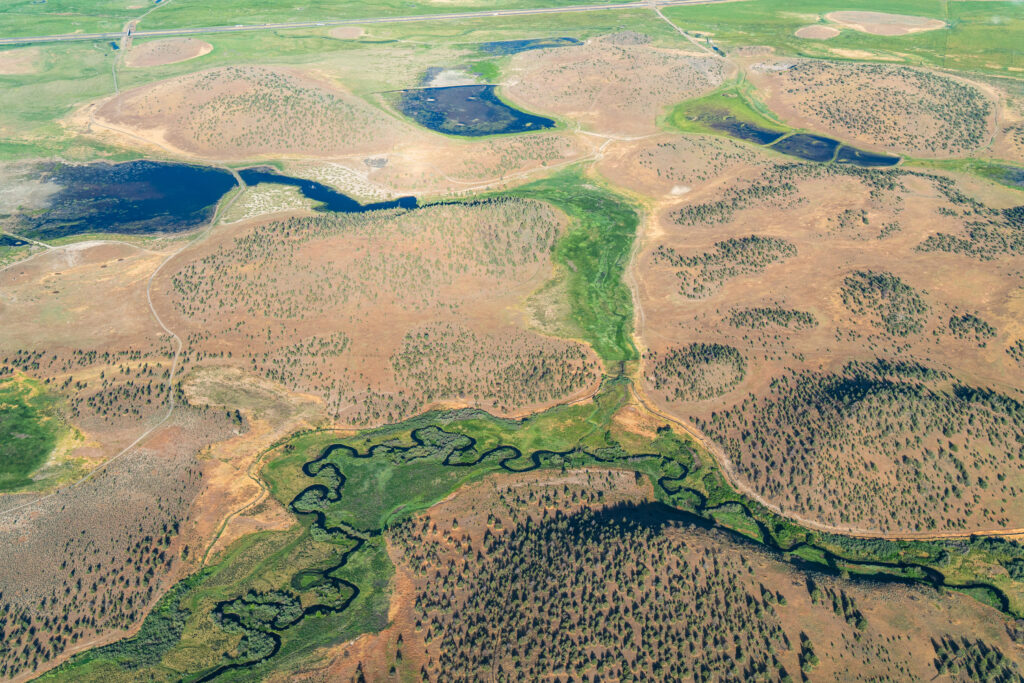Now that four dams previously blocking anadromous fish migration on the Klamath River are down, state and local agencies are negotiating the next stage of river restoration. They are acting to regulate the beneficial uses of water in overallocated Klamath River tributaries as equitably as possible.
The Shasta River historically produced more salmon per unit of flow than any tributary in the Klamath system. Due to their exceptional conditions for anadromy, the Shasta and Scott Rivers were featured in Gov. Newsom Administration’s 2024 report “California’s Salmon Strategy for a Hotter, Drier Future.” This report called for the establishment of instream flow requirements in the Shasta and Scott. It also encouraged locally-driven solutions and incentives for reducing diversions and groundwater pumping.

Irrigated areas near the Scott River. Image: EcoFlight
Drought conditions between 2019 and 2022 diminished available water supplies in the Scott and Shasta rivers, but many irrigators continued diverting and pumping as usual.
The Pacific Marine Fisheries Council’s cancellation of California’s commercial salmon fishery in 2023 prompted the California State Water Board to issue emergency regulations that implemented curtailments on diversions in these watersheds. The Board reinstated these emergency regulations in 2024 and 2025. The reinstated regulations coincided with the unprecedented three-consecutive-year cancellation of commercial salmon fishing and the restriction of recreational and Tribal salmon fishing seasons.

The meandering Shasta River and storage ponds along it. Image: EcoFlight
Some observers have criticized the emergency regulations for their insufficiency, incoherence, and non-transparency. Yet when enforced, the emergency regulations are proving successful at boosting instream flows to minimum levels. These flows encourage the survival of salmon during various stages in their life-cycles, as determined by the California Department of Fish and Wildlife.

A hydrograph of the Shasta River near Yreka in July 2023. This hydrograph shows what occurred after the California Water Board lifted curtailments in 2023. A hydrograph is a graph showing the rate of flow or discharge versus time past a specific point in a stream or river. Image: Dreamflows
In October 2024, the State Water Board directed its staff to investigate the feasibility of issuing permanent regulations, regardless of the water-year type. According to veteran salmon advocates, this process is expected to take approximately five years. State Water Board staff is currently preparing an “Economic Analysis and Scientific Basis Report” as outlined in Resolution 2024-0036. The report is scheduled to be available for public review and comment in fall 2025 or winter 2026.
To continue minimum instream flow requirements in the interim, the Karuk Tribe introduced AB 263 in spring 2025. This bill was sponsored by Assemblymembers Chris Rogers (D), James Ramos (D), and Damon Connolly (D). The legislation would extend current emergency instream flow requirements for the next five years. That change would maintain momentum on flow regulations and enforcement processes until the State Water Board can analyze and adopt long-term instream flow requirements. The legislation sailed through the Assembly with 56 Ayes and 17 Noes in May. It is now awaiting its third hearing in the Senate. If the bill is adopted in the Senate as expected, it will go to Governor Newsom’s desk.
CSPA encourages fish advocates throughout the state to contact their state senators and the Governor’s office to urge passage of AB 263. CSPA also encourages advocates to track the State Water Board’s permanent instream-flow-setting process and to submit comments on the draft Economic Analysis and Scientific Basis Report once it is released.
